Table of Contents
Summary
» Country? Thailand.
» In a few words, what is the idea? Buddha alone? The answer is no, it is usual for him to appear accompanied by mythological deities and beings. We explain why and who they are.
» Duration? 20 minutes.
» For whom? Travellers interested in the details of Buddhist temples, curious about striking things.
» Where? Buddhist temples with images that don’t depict Buddha.
» When? Anytime.
Description
In the temples... is Buddha alone?
No, often Buddha is not alone, some gods and mythological beings are also depicted in temples by images and sculptures, even though they don’t belong to the Buddhist beliefs. This is apparently contradictory.
It usually causes quite a bit of surprise and bewilderment the first time visitors notice.
And it happens because the mental scheme that we use to elucidate everything we see is conditioned by our Christian (Jew or Muslim) cultural background. A single omnipotent and omnipresent God, incompatible with other deities or alternative beliefs.
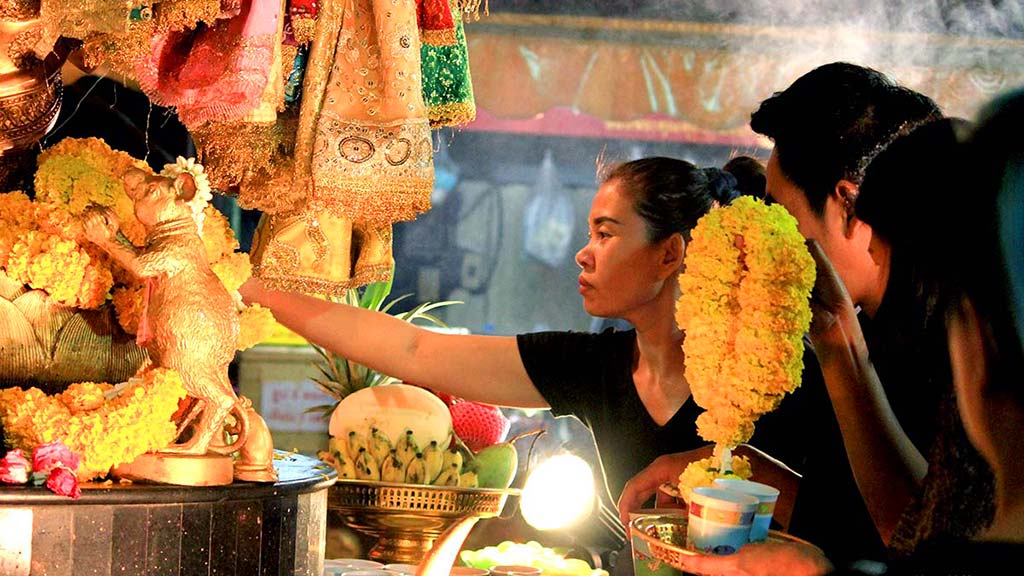
But this is not the case in Thailand. These people have been very receptive to the successive waves of preachers of different religions and, besides, Buddhism has not sought to impose itself by force or to eliminate the traces of the ancestral beliefs in spirits.
Buddhism is probably one of the most tolerant religions with those who think differently.
Buddhism + Brahmanism + Religion of the Spirits = The solution is a bit of DIY with the personal beliefs
It’s also interesting to think that when someone believes in the existence of a single god as Christians or Jews do, this god is present everywhere and all the time of the believers’ life.
In the Buddhist monasteries, you can find the Hindu Gods like Brahma and Ganesh, mythological beings like the giants Yaksha, and representations of the spirits of historical or legendary characters, like Mae Nak.
The result is that different beliefs are compatible with each other making a bit of DIY, each in their own way.

All spiritual beings have their personal charism and traits, they are more helpful for some things than for others.
The temple displayed is a good example. The Buddha statue in the centre presides over the sacred site, Phra Rahu in front and the god Ganesh behind.
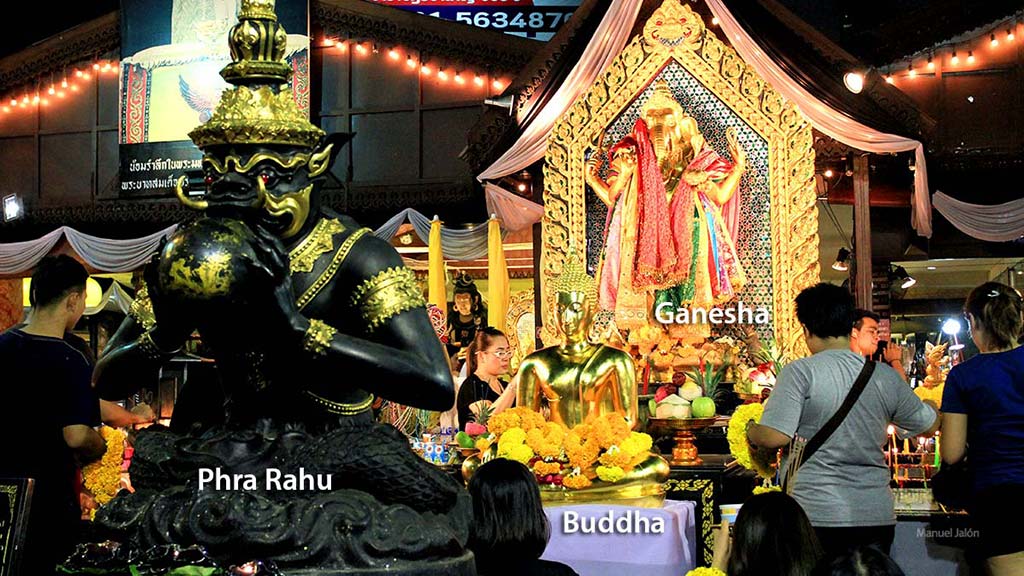
In conclusion, the spiritual universe of Thais is densely populated and to facilitate the life in common the solution is to separate rooms and times, to know their charisms and set a hierarchy.
At the top is Buddha, who occupies the highest position in the spiritual hierarchy.
Phra Rahu, capable of swallowing the sun and the moon.
In some temples, Phra Rahu represents the mythological being that causes the eclipses and is capable of provoking darkness, chaos and destruction.
We could identify him as the god of evil. A very unusual vision.
By worshipping him, the idea isn’t to harm others but to protect oneself from evil beings. Phra Rahu is one of them, the boss, so he knows them well and also knows better than anyone how to protect you from their worst actions.
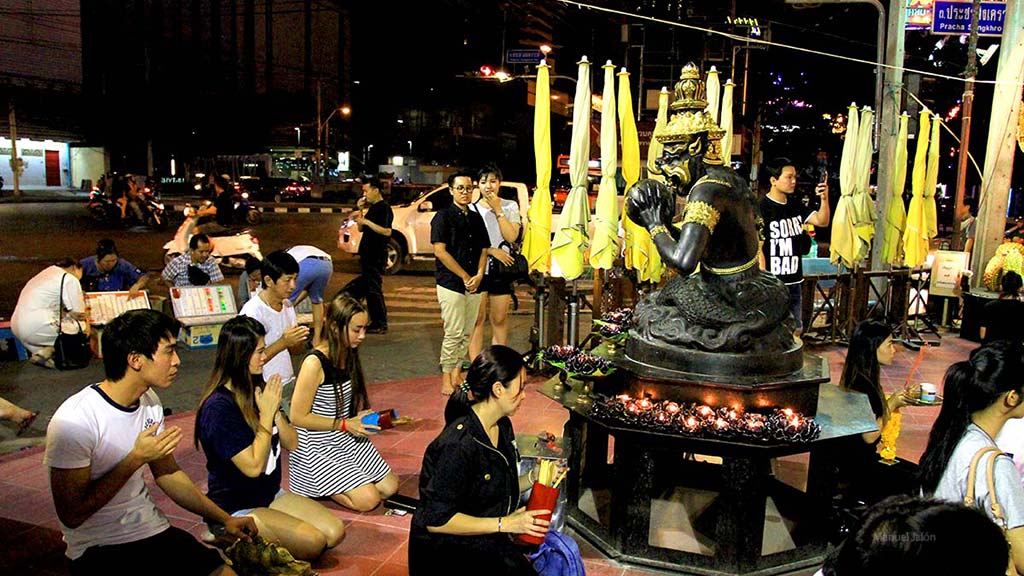
Logically his favourite colour is black and black must be the colour of the offerings, even the flowers.
Black grapes to protect the business, black liquor to do the same with investments, glutinous black rice to protect the health of the family, etc.
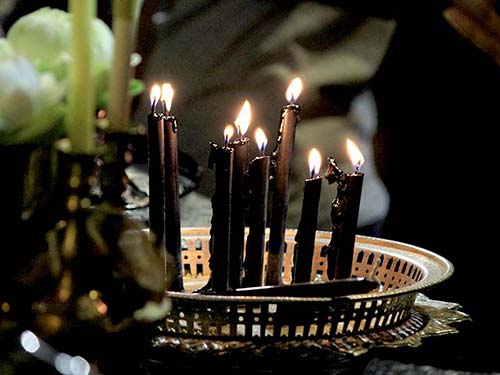
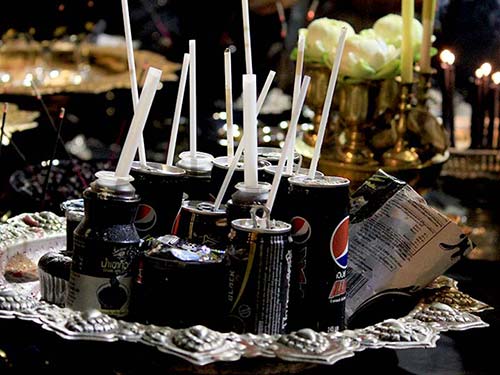

Ganesh helps you with your new projects
This God belongs to the Hindu pantheon. It’s easy to recognise by his appearance because he has a human body with four arms and an elephant head.
He is a very popular divinity, propitious to overcome great obstacles, so making offerings is appropriate when new projects begin and to persevere in the face of difficulties.
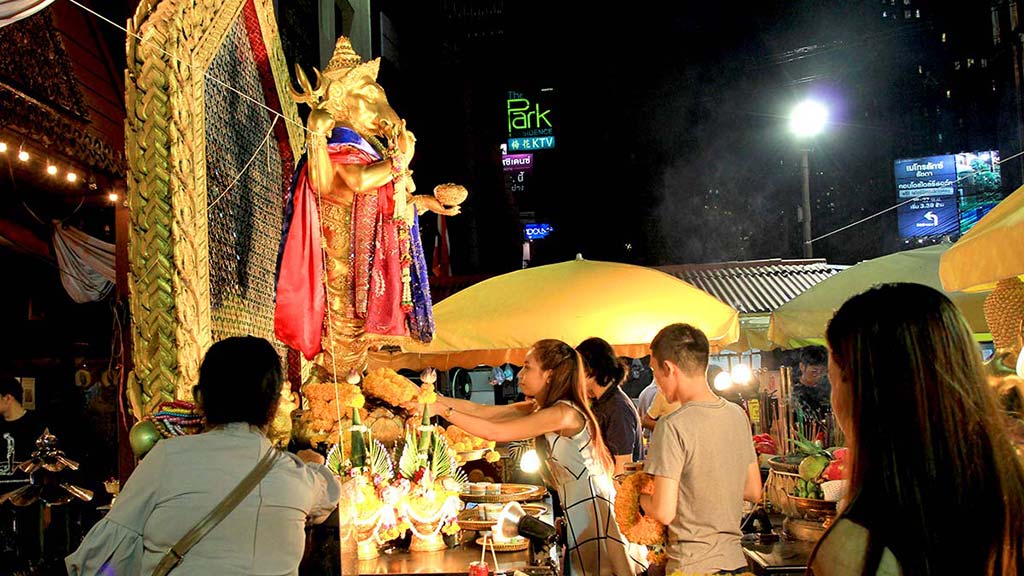
Although there are more versions, it is believed that his mother Parvati conceived him to be her personal guardian, to protect the door and keep her safe. When Shiva got back Ganesha didn’t recognise him and denied entry, so Shiva responded by cutting off his head. Quick and effective!
To restore such loss and thus to comfort his grieving mother, God took the head of an elephant to bring Ganesh back to life.
In Thailand, this is the most represented god, in addition to Brahma.
Pingback: My Homepage